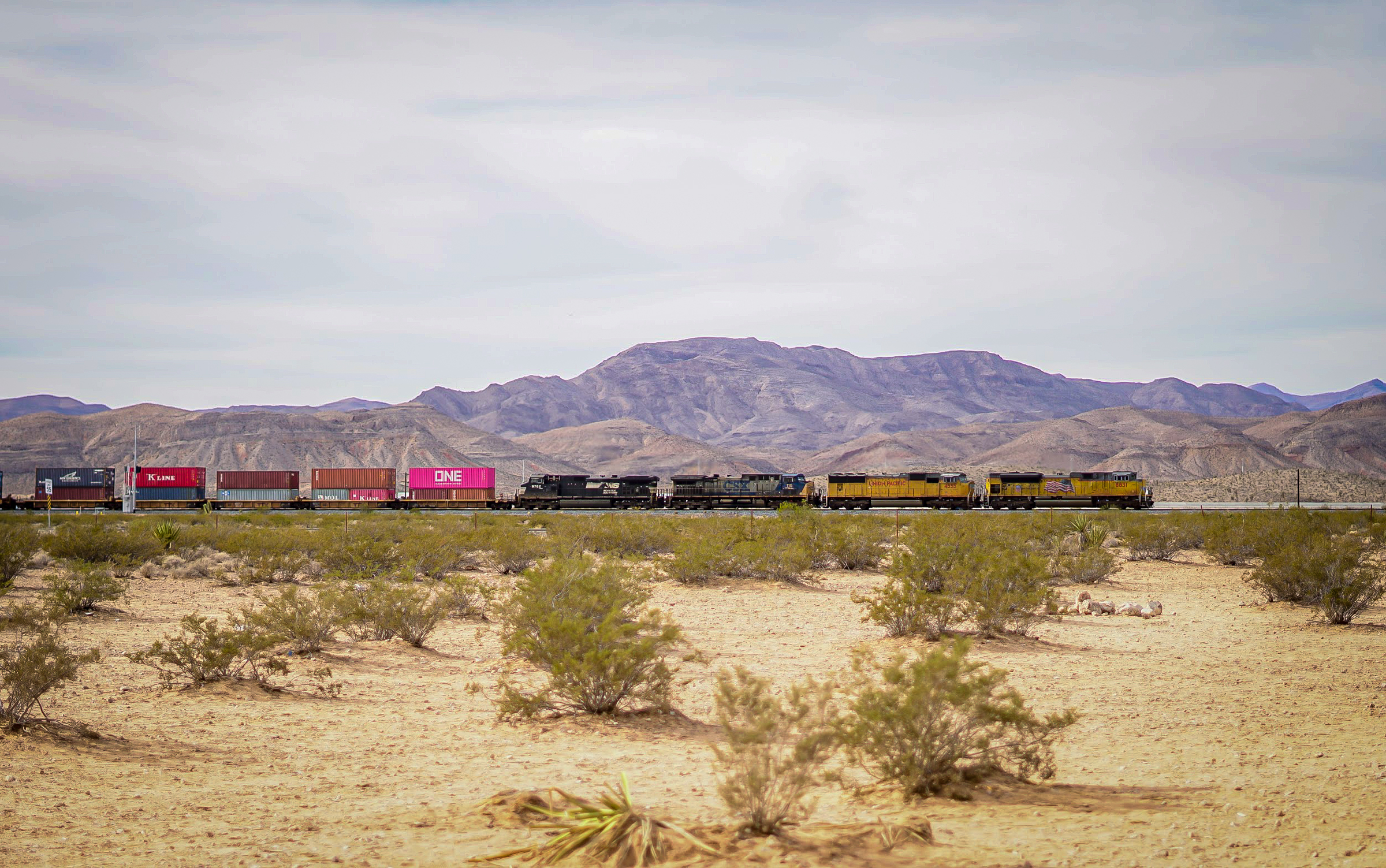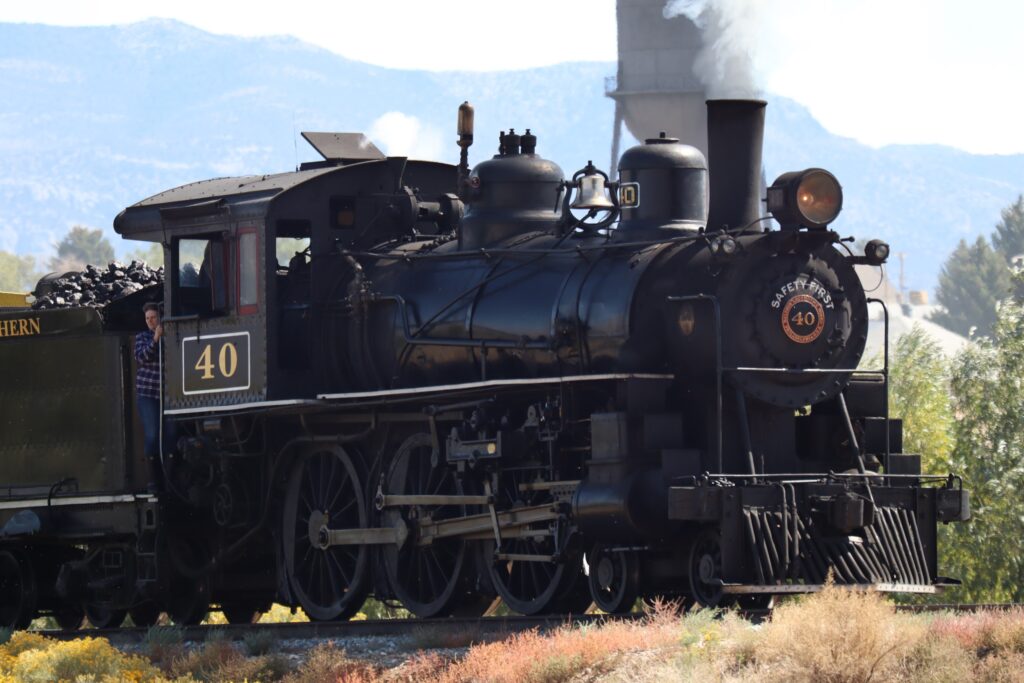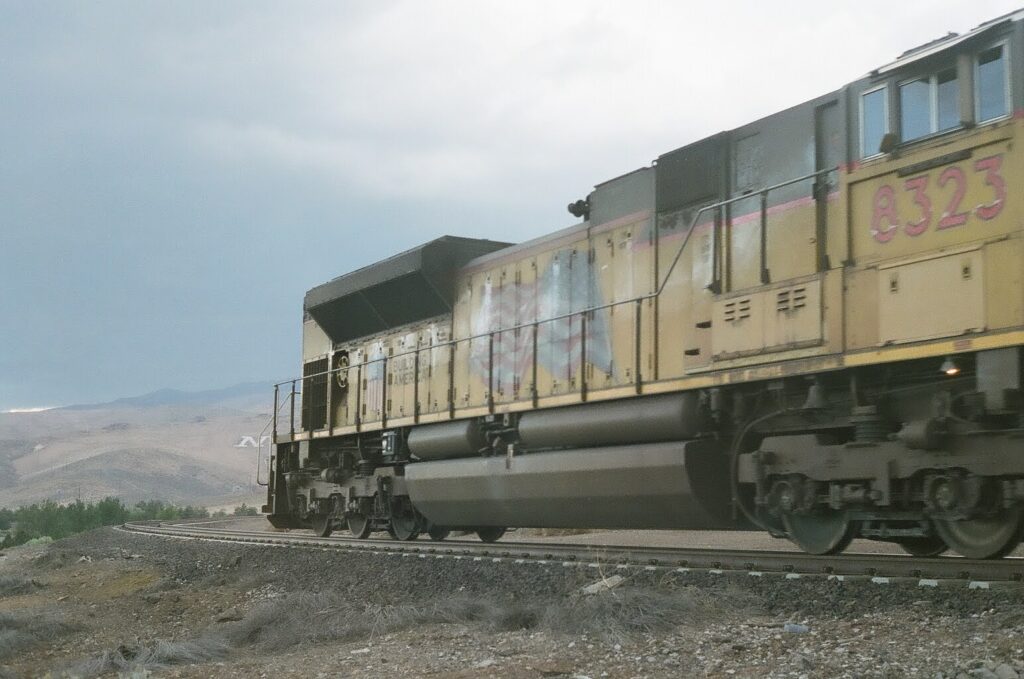Coalition hopes to seize infrastructure bill opportunity, expand railroads in Nevada

The traffic jams happen like clockwork, clogging Interstate 15 on Sundays as weary travelers leave Las Vegas and head back to California. And in Northern Nevada, the winter months and the blizzards they bring can mean sudden shutdowns of Interstate 80 between Reno and Sacramento.
These situations have long prompted calls for more passenger rail to connect the two states, but so far, that talk hasn’t turned into a reality.
As it stands, only one active Amtrak line runs through Nevada, connecting Sacramento to Reno, which then goes on to connect to Winnemucca, Elko and, eventually, Salt Lake City. Las Vegas has no passenger rail service. But a new group is looking to change rail in the state as a whole, and state leaders are eyeing the possibilities as well.
The Nevada Rail Coalition — an advocacy group made up of railroad unions, environmental groups and community organizations — formed at the beginning of this year. The coalition is unique compared to other such groups in that it’s pushing for both more passenger and more freight trains, hoping to capitalize on the recent passage of the $1.2 trillion federal infrastructure spending bill.
"We want to strike when the iron is hot," Nevada Rail Coalition co-chair and Sierra Club member Anne Macquarie said. "Nationwide, [the bill provides] $66 billion in guaranteed funding for rail over five years and $42 billion of that is going to flow through the Federal Railroad Administration (FRA) in the form of competitive grants. So we saw this come down the pipe, and we thought it was an absolutely unprecedented opportunity."
Members of the coalition plan to reach out to state leaders and encourage them to apply for these competitive grants, while also engaging in public outreach and education that could help build support for expanded rail service.
Last year, Nevada joined the Southwest Supply Chain Coalition, a group of states including California, Arizona and Utah, that are looking to create better interstate supply chain infrastructure. Officials with the Governor’s Office of Economic Development (GOED) announced in August that they were partnering with OnTrackNorthAmerica, a nonprofit transportation policy group, to create the coalition with a goal of connecting markets and lowering costs.
The Nevada Rail Coalition, meanwhile, has proposed rail projects it would like to see started. They align with a rail plan released last year by the Nevada Department of Transportation (NDOT).
Kris Sanchez, deputy director of GOED, helped build out NDOT’s rail plan. He said the group wanted to ensure it wasn’t just a report that sat on a shelf with no action.
“We started asking a lot of questions,” he said. “So what if we were to have the [agriculture] industry start moving their commodities on rail? What if the mining industry started to do that? … And what you end up with is the ability to aggregate, and that’s essential to make rail work.”

Environmental and economic benefits
Sanchez said the office is mainly focusing on freight rail right now, but is aware of the need for more passenger transportation across the state, between western states and within cities.
Among the projects the Nevada Rail Coalition wants to see move forward is the Capitol Corridor, a passenger rail route that connects to the Bay Area and stretches all the way to Auburn, less than 100 miles west of Reno. The coalition wants to see that route extended all the way to Reno.
"It does make a lot of sense,” said Ron Kaminkow, the co-chair of the Nevada Rail Coalition and general secretary of the Railroad Workers United union. “Donner Pass has closed on many occasions throughout the winter … [but] the railroad can keep moving. And here's an example where it would be beneficial to both freight and passengers."
But Kaminkow said infrastructure investment is needed to extend the Capitol Corridor for more passenger rail services. There are rail lines in the area, but they are not all connected and the size and reach of the tracks is limited.
Kaminkow and Macquarie said the coalition is pushing for more freight trains, too, which would mean fewer trucks on the highways. This could help reduce carbon emissions, as train lines generally have a smaller carbon footprint than cars and trucks.
"If we invest [in] infrastructure like roads, that's not actually going to make traffic less," said Sarah Park, the Las Vegas hub coordinator for the Sunrise Movement, a progressive youth-led advocacy group. "What we need to do instead is [a] shift to more public transportation, which would actually decrease the traffic flow, and, in turn, help our environment by decreasing carbon emissions."
According to the Environmental Protection Agency (EPA), in 2020, transportation emissions made up 27 percent of greenhouse gas emissions in the United States, the largest of any economic sector. In Nevada, Gov. Steve Sisolak signed a bill in 2019 that established goals for cutting the state’s greenhouse gas emissions 45 percent by 2030.
The law, however, does not specifically mention rail. Macquarie considers the omission of rail in the measure a mistake, given that walking, biking and trains can be more eco-friendly forms of travel.
Sanchez sees the need for rail, especially freight trains, from a logistical standpoint, given dramatic growth in shipping driven by the e-commerce sector.
“We had 10 years of growth in [the second quarter] of 2020 in e-commerce in just the one quarter. So what that means is that the supply chains have to adjust,” he said.
But the cost for these projects can be a barrier. Tina Quigley, president and CEO of the Las Vegas Global Economic Alliance, spent a brief stint working with Brightline (formerly Virgin Rail), a private passenger rail company looking to connect Southern California and Las Vegas with a high-speed route.
Once built, it would be the first passenger rail project in Las Vegas, other than the four-mile Las Vegas Monorail that runs along the Strip. Quigley said government partnerships with private rail companies are key to bringing them to life.
"The amount of investment in the infrastructure is a serious barricade to those projects,” Quigley said. “And the fact that there haven't been a lot of federal funds for those … seriously large projects — it makes it even harder."

Economies of scale
Union Pacific is the primary private freight provider in Nevada, and Sanchez said it has been difficult to get Nevada’s smaller communities connected with the company. Small rural communities don’t offer as much as the larger rail connections the company normally operates. Sanchez wants to position the state as an entire ecosystem rail companies could tap into for growth.
“If we go to [Union Pacific] with an entire state proposal that is thousands of containers versus maybe five containers — well, that's going to get attention,” Sanchez said. “One of the reasons we're focusing on freight is that the profits are there. If we can aggregate the commodities that are shipped, it makes sense. Bottom line, [it] enhances the operations of our mining industry, for instance.”
Kaminkow and Macquarie both pointed to another problem complicating Nevada’s quest for more rail service: The Silver State has a smaller population than many states on the eastern seaboard, where a lot of the infrastructure money is going. California has been increasing its rail efforts in recent years, but Nevada doesn't have a population that is used to rail.
“I think we need to be more engaged as a state nationally and looking at what's going on in rail in the region and in California and taking a longer-term approach,” Sanchez said.
Historically, Nevada had three main rail lines — two in the north and one in the south, Kaminkow said. He also explained that passenger rail travel isn't as prevalent in the United States as it is in Europe or Asia because it’s not as profitable. In addition, the rail lines in other parts of the world are subsidized by their governments and are more centralized, unlike in the U.S., where each state has a lot of say over rail lines within its borders.
“As a country, we deprioritized rail over time, and passenger rail is the best example of what that means. We experienced it in freight too,” Sanchez said. “There's a thousand less miles of rail and utilization in the state of Nevada than there was a hundred years ago.”
Regional entities must also work together, he noted. Macquarie said just going from Reno to Emeryville, California, means passing through the jurisdiction of four regional transportation agencies.
The Nevada Rail Coalition has set its sights on getting those fragmented agencies to join forces on regional projects, such as expanding rail service through the Capitol Corridor and connecting Utah, Las Vegas and Los Angeles. Providing rail service between Reno and Las Vegas would be a longer-term initiative, said Kaminkow.
Sanchez said that one project that could get underway quickly is tapping into the rail systems in Ely.
“The Northern Nevada Railway has about a 120-mile stretch of rail, and [it’s] almost ready to go, but for about a mile of the track that was years ago dug up,” he said. “We're not talking about millions upon millions upon millions of dollars to get that rail operational. We're talking about inside of probably $5 to $8 million.”
As Sanchez works on expanding rail within Nevada, he says the timing is optimal for economic reasons.
“It has to do with what I would say [is] the … changing behaviors of the consumer,” he said.
